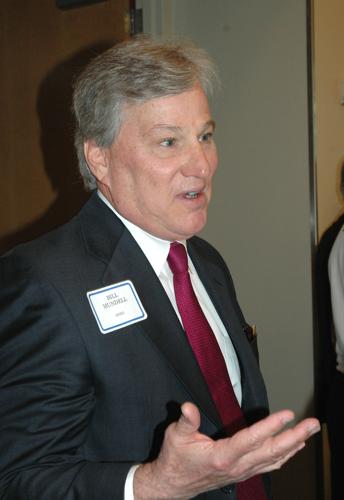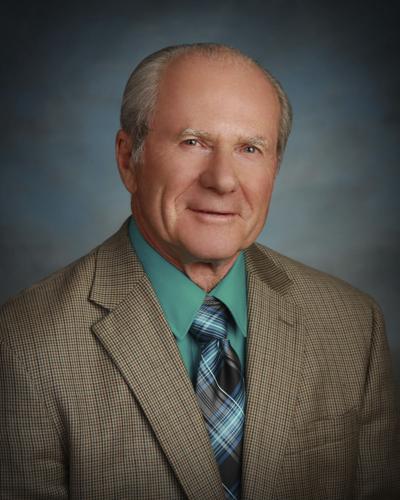The long-term viability of independently produced solar power could hinge on voters’ choices for state utility regulators.
Three of the five seats on the Arizona Corporation Commission are up for election on the November ballot. Three Republicans — Bob Burns, Boyd Dunn and Andy Tobin — and two Democrats, Bill Mundell and Tom Chabin, are running; each voter can choose three candidates.
The commission isn’t likely to rescind the decade-old mandate that electric companies get at least 15 percent of their power from renewable sources, including some solar, by 2025.
That would be politically unacceptable, not just to users but to the utilities, said former commissioner and current candidate Mundell. “They don’t want a headline that says, ‘Commission reduces it from 15 (percent) to 12, to 10,’ ” he said.
Instead, Mundell contends, the utilities are hoping to hobble the mandate — especially the part about getting power from rooftop solar.
“They’ve been doing it with their demand charges, with hookup fees, with looking at net metering,” all of which could make individual solar installation unaffordable, he said.
Some of this could be decided before the new commission takes office in January. The current all-Republican commission is tentatively set to review such issues next month.
But it will be the makeup of the commission starting in January that is more likely to determine long-term policies — starting with the question of what role government should play.
Tobin, an incumbent, said many questions of where utilities obtain their power will resolve themselves through the market, both from the perspective of lower costs for alternatives as well as consumer demand.
He said the government has had a heavy hand in the process, particularly at the federal level with the U.S. Environmental Protection Agency and its various pollution regulations.
“They put on such restrictions onto our coal producers that were going to cost hundreds of millions of dollars, mostly hurting the poor because those are our base rates,” Tobin said.
Chabin said market forces only go so far. “If the market says to dirty the sky and choke us all, I’m not for that,” he said.
He said he believes changes in technology will make cleaner sources of electricity more affordable. But he’s not sure that power companies are ready to go along.
“Are we going to have utilities that are going to obstruct it because it messes with their business model?” Chabin asked.
The utilities want changes in the regulations.
One deals with “net metering,” which is how much utilities have to pay customers who generate more power than they need. For most of the year, each extra kilowatt hour a homeowner produces becomes a credit against the next month’s bill. Once a year there has to be a reconciliation, with the utility paying the homeowner for excess power generated.
Utilities want a change in the rate they have to pay at the end of the year.
The utilities also want “demand charges.” Now, most residents pay a bill based on two components. The first is a flat fee for service. The second is based on usage, though the rate may vary on time of year and time of day.
A demand charge would be based on the highest peak usage at any one time, no matter how brief, such as the air conditioner kicking on while the electric dryer is working.
Demand charges would be paid by all customers. For solar users, they are an issue because they would reduce the savings on their electric bills through which they hope to recoup their initial installation costs over time.
The utilities contend the current system results in an unfair subsidy, with customers who cannot afford rooftop solar paying the lion’s share of maintaining the whole grid system, effectively subsidizing solar customers.
“That’s the talking point of utilities,” Mundell said. “But what they don’t tell you is the other side of the coin is if people put solar on their homes, the utilities don’t have to build infrastructure.”
The commission sets rates — and profits for utilities — based on a rate of return on their capital investment.
“If they build a fossil fuel plant ... they get to put that in rate base and raise everybody’s rates, solar and non-solar alike,” Mundell said. No construction, he said, means nothing to charge back to customers with a profit markup.
“So solar rooftop benefits the non-solar customers,” he said.
Dunn said he’s a fan of the current net metering rules.
“Because of net metering, Arizona is now ranked third in terms of rooftop solar,” said Dunn, a former Chandler mayor and Superior Court judge.
“We have brought in 10,000 jobs, 36,000 rooftops have that (solar), 450 different companies have been formed,” he said. “That’s the good news.”
Dunn said he won’t commit to anything, however, until he reviews the ACC staff report and hears from all parties.
“I think net metering could continue,” he said, but added it could be modified. “It can be whatever the vision of the Corporation Commission is of what that solar should be, weighing, again, the cost and the benefits and realizing that may have changed because of the success.”
Tobin agreed.
“We can’t advance new technology until we figure out what the value of these rooftop solar units are,” he said.
Burns, like Dunn and Tobin, said he wants to study the recommendations further. And Burns, as an incumbent, said he does not want to be accused of prejudging the matter.
Burns said there’s more to the issue of charges allowed on customers with solar power than questions of who might be subsidizing whom. And one is water.
“We are in a situation where a water shortage is about to be declared on the Colorado River,” said Burns, a former state senator who also had served on the board of the Central Arizona Project. “If that shortage is declared, Arizona’s the first one that has to take the cut.”
What makes that important, he said, is that generating power from coal, natural gas or even nuclear “uses a lot of water,” in each case creating steam to drive turbines.
“Solar, wind, fuel cells, a number of renewables don’t use water,” Burns said. “Those are the kind of things that go beyond the net metering viability question in my mind.”
Chabin said there’s another thing people need to keep in mind when looking at the question of net metering.
When a utility pays a homeowner for excess power generated, it pays a wholesale rate, Chabin said. “And when I produce the kilowatt hour that’s extra in that total, where does it go? It goes to my next-door neighbor,” he said. The utility gets the check — at the retail rate.















